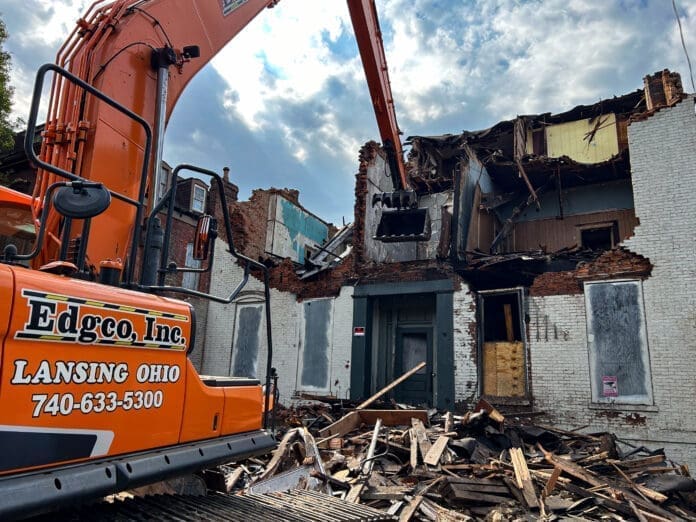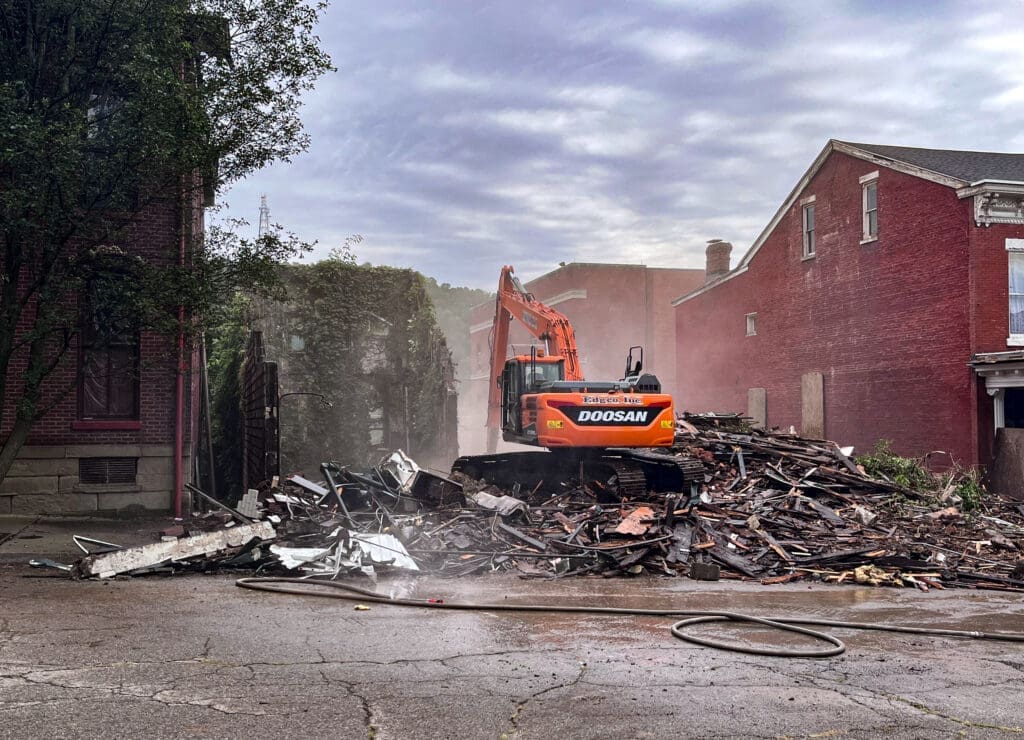
Dilapidate properties have riddled the older neighborhood in Wheeling for decades, but for more than a year City Manager Robert Herron has orchestrated orders for a series of demolitions utilizing $1 million from the federal American Rescue Plan Act.
The majority of razing approved by the majority of Wheeling’s council has been in wards two and three, areas that include Wheeling Island, North Wheeling, East Wheeling, Center Wheeling, and South Wheeling. The average cost for a demolition has been approximately $35,000, and each contract has been bid out to local contractors.
“When the ARPA regulations first came out, they were called ‘Interim Rules’ and funds for demolition and property acquisition of dilapidated structures were not included. When the final regulations came out, though, the demolitions and property acquisition were included and the city of Wheeling has greatly benefited,” Herron explained. “We haven’t acquired any properties with those funds, and that means we’ve had more dollars for the demolitions.
“Since we started with the demolitions, I believe we’ve funded at least 50 so far,” he added. “Unfortunately, there are many more that could be torn down, but we’ll continue working with those property owners in the future.”
Herron did confirm more razings are expected this fall now that it’s been determined that 15 percent of the allotted funds remain available.
“I was briefed recently by our code officials and they have reported that we still have funds remaining so that means we’ll likely sign another contract for more demolitions,” Herron reported. “I signed three demolition contracts (last) Monday morning so that would leave us with about $150,000 remaining of the million-dollar allocation.
“It’s been a very good year as far as the demolitions and the positive impacts they’ve had on the neighborhoods where they’ve taken place, and that’s why we’re going to keep going with the monies that are still available,” he continued. “Mostly likely, we’ll hold back some of those funds for emergency demolitions because those do arise from time to time, but it’s my hope we can bring down another 10 structures before the cold temperatures of winter set in.”

Rodents, Squatters, and Safety
An emergency demolition of a large, vacant house began on September 12 on 14th Street in East Wheeling, and five days later employees with EdgeCo Inc. had removed a structure popular with raccoons, groundhogs, and rats, as well as with drug abusers and homeless individuals, the city manager confirmed.
The house was wedged between two residential properties so the operator of the large backhoe had to maneuver the machinery very carefully, and the operator had four spotters assisting during the first two days.
“We have hired EdgeCo. several times and we’ve found them to be very good at what they do. Because of the age of the city of Wheeling, demolitions in tight places haven’t been that rare,” Herron said. “When it comes to demolitions in neighborhoods like East Wheeling, North Wheeling, and in several areas of Center Wheeling, those structures are only a few feet away from each other because that’s all that was allowed when they were building.
“Now on 14th Street, there is a very nice, large lot that hopefully someone will develop on in the future,” he continued. “Right now, we do not own that parcel but we are working with the out-of-town owner to see if he will surrender it. If that happens, then we will communicate with the neighbors to gauge interest.”
That’s been a popular practice, Herron said, the past several years.
“When we are going through the demolition process, we tell the property owner that we will take the property off their hands, and that’s what usually occurs with 60 percent of the cases. We don’t get every one of them, but when we do we do what we can to get the property back on the tax rolls,” he said. “We’ve had a lot of success with adjacent property owners paying a reduced price and taking possession of the property.
“There’s nothing worse than a big area of lots that aren’t taken care of in our neighborhoods,” the city manager said. “We do our best to keep up with the maintenance on all of those properties because, in a lot of those cases, the owners aren’t doing the maintenance and that makes it very difficult.”

Did Washington Sleep There?
There is a checklist that must be exhausted before a demolition can take place in the city of Wheeling, and there are two primary reasons for that mandate:
One, history. And two, history.
The roots of the Upper Ohio Valley are deep enough to reach all the way back to the Revolutionary War era, and the city of Wheeling played a prominent role during the Civil War years, and it was an imperative location for America’s industrial emergence and the development of everything west of the Ohio River.
That is why Herron confers with housing market experts and local historians before advancing to demolition.
“We do our best to identify any historical significance to a structure before we bring them down,” Herron explained. “In some cases, we bring in realtors and historical preservation experts, and sometimes there are ways to save a building, but in others, the only option is to bring the structure to the ground and that was the case with the large structure on 14th Street.
“That demolition will help that area of East Wheeling in a lot of different ways like safety and property value,” the city manager added. “And the same thing has been happening in many areas of the city.”

